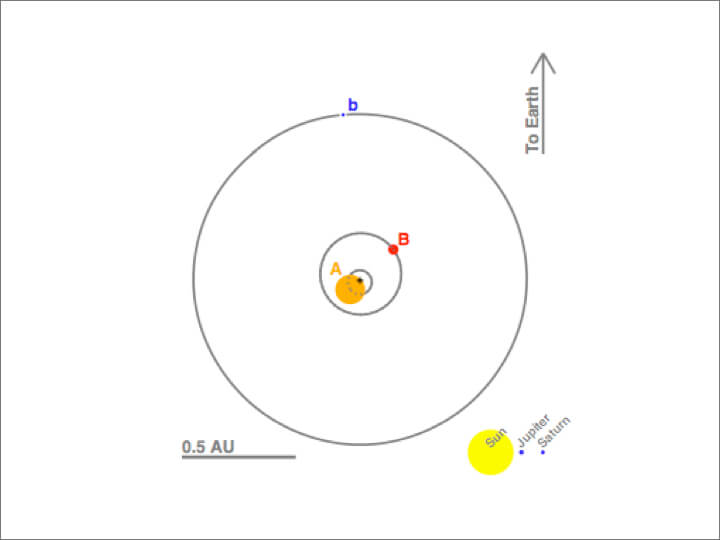In the immortal scene in "Star Wars", Luke Skywalker walks on the soil of the planet Tatooine when two suns are on the horizon, now researchers, including the Israeli Avi Shaforer, say that the Kepler space telescope has discovered such a planet in reality

Dr. Avi Shaforer from the University of California at Santa Barbara and at the Las Cumbers ObservatoryHe was part of a team of NASA personnel who published today (Thursday) in the journal Science that they had discovered the first planet known to orbit two "suns", an idea that became known to the public thanks to the planet Tatooine in the movie "Star Wars".
In the immortal scene in "Star Wars", Luke Skywalker walks towards the horizon when two suns are on the horizon. This type of planet is called a circumbinary planet, which means that it orbits a binary star system. In an interview with the website Hiden, Dr. Shaforer explains that: "This is the first discovery of its kind, since all the planets that have been discovered to date revolve around single stars.
"The discovery was made possible thanks to the high precision of Kepler's measurements, and also because measurements from space are continuous (24 hours a day). What makes the discovery particularly interesting is that all three bodies in the system, the planet and the two stars, mirror each other. The eclipses, and additional measurements, allow a precise characterization of the radius and mass of the three bodies, as well as their orbits. The planet is similar to Saturn in radius and mass and moves in a 229-day orbit around its two parent stars. The double star has an orbit of 41 days and is slightly elliptical. Both stars are smaller than the Sun, with the smaller one being a red dwarf and currently the smallest star for which the mass and radius have been measured with high precision.

Observations from the ground are a significant part of the Kepler project, "We at LCOGT use our telescopes as part of a larger effort to accurately track and characterize the interesting stars that Kepler detects." says Tim Brown, science director at LCOGT and a UCSB physics professor who is a member of the Kepler team.
The Kepler-16 system is just one of a series of discoveries made by the Kepler telescope since its launch in March 2009. Sheporer said that most of the interesting bodies have yet to be discovered as Kepler continues to monitor the stars.
For information on the website of the University of California at Santa Barbara
Dr. Shaforer's lecture on extraterrestrial planets as part of the Astronomical Club of Tel Aviv University

7 תגובות
father.
I think that in order to have a situation like in the sunset story there should be one or more suns also in orbits like Jupiter's.
Then it will be like in the 2010 space odyssey sequel where they turn Jupiter into another sun.
That's how it is when dreams "travel" in places the eyes can't see!
Not to forget Asimov's classic story and death god - Sunset.
Talking about a similar world…. 🙂
Fascinating! Thanks
The Lovey Soyuz landed safely